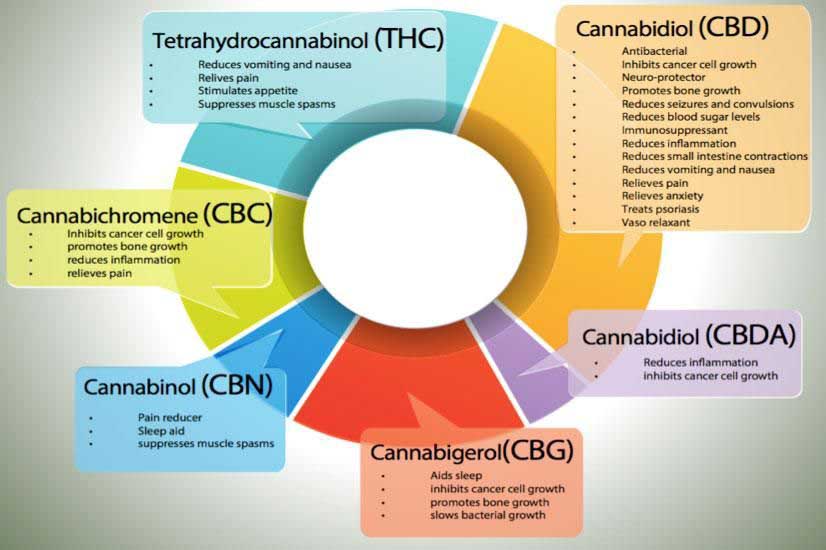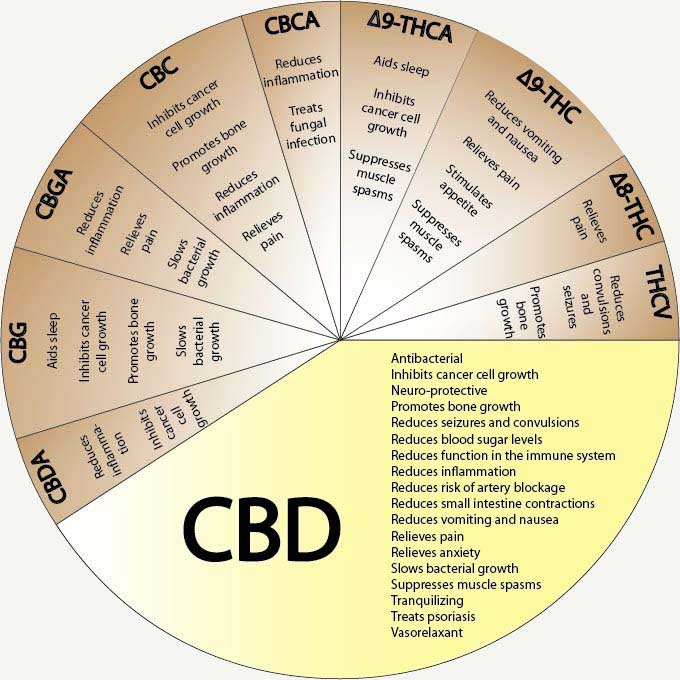What is Full-Spectrum CBD?
Full Spectrum means that all of the different cannabinoids, flavonoids, terpenes and fatty acids found within the plant still remain in the final product. In general experts within the industry along with consumers report a more satisfying and better healing experience from full-spectrum products. Full Spectrum not only contains CBD you also get the benefits of compounds such as CBG, CBC and trace amounts of CBN. Full-spectrum CBD extracts also contain minerals like zinc, magnesium, calcium, potassium, phosphorus, and iron along with a multitude of complex vitamins A, B, C, E and beta-carotene. Including all the healthy fats and proteins and hundreds of active compounds that make up the genetic composition of the hemp plant. As you can see hemp is packed with benefits and it only makes sense to take advantage of them by using full-spectrum derived products formulated to interact synergistically to enhance your overall health.

What is CBD?
CBD is a successor to a cannabidiol compound named CBDA, cannabidiol is a cannabinoid. Cannabinoids are naturally occurring compounds found in numerous different plants. Scientific studies suggest that cannabidiol may hold a wide variety of potential benefits. There are several plants other than hemp that contain cannabinoids. CBDA is the second most abundant compound found in hemp in the form of a cannabinoid. Making up around 40 percent of the plants extract. CBDA is the acidic precursor to CBD. As hemp grows it does not produce CBD it produces a cannabinoid known as CBDA. CBDA in itself is considered to be an inactive compound. CBD only becomes available after a process is performed known as decarboxylation. Decarboxylation is the process of heating plant material above a certain temperature to alter the compound CBDA into CBD. CBD then becomes active and available to access the beneficial properties. CBD is one of over 100 cannabinoids detected with more being found frequently. CBD has been found to affect the Endocannabinoid system of all living mammals including humans.

What is an Endocannabinoid System?
It is a biological system composed of endogenous lipid-based retrograde neurotransmitters that bind to cannabinoid receptors and cannabinoid receptor proteins found within any living mammal’s central nervous system and peripheral nervous system capable of interacting with cannabinoids such as CBD. There are two major cannabinoid receptors that have been discovered CB1 and CB2 receptors. Both receptors can be found throughout the human body. There are also two major Endocannabinoids that are produced naturally by our bodies Anandamide and 2-AG. These two compounds are created by the body on an as-needed basis and are not stored for later use.

How CBD Works
CBD is believed to effect CB1 and CB2 receptors to produce a variety of potentially positive outcomes. CBD impacts these receptors indirectly by activating TRPV1 receptors that control pain perception and inflammation within the body. CBD is also believed to increase Anandamide (The Bliss Molecule) which affects motivation and pleasure. With these effects it is perceived that CBD may have the ability to reduce pain sensation and decrease inflammation which may result in a better quality of life for those suffering from the previous mentioned aliments.



